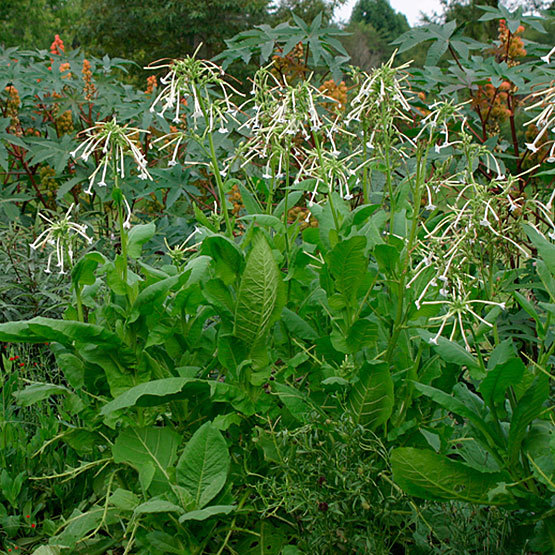
The 67 species of Nicotiana hail from Australia, North America, and tropical South America. All have tubular or trumpet-shaped flowers that usually open in the evening and at night, sometimes releasing a potent fragrance. They can be used as specimen or bedding plants and in borders, woodland gardens, or containers. Heights range from less than 1 foot to over 10 feet.
Noteworthy CharacteristicsLong-blooming, attractive plants with trumpet-shaped flowers in shades of green, white, red, and pastels. Some species have attractive foliage. Fairly easy to grow from seed. Contact with the hairy foliage may irritate skin.
CareFull sun to partial shade in fertile, moist soil with good drainage. Stake plants that are not grown in sheltered locations.
PropagationTo get these plants going, you could just scatter seed in early spring, but you won’t get much of a display until August. For earlier blooms, start the minuscule seeds inside 8 to 10 weeks before the last frost date at 64°F. Seeds should be surface-sown since they need light to germinate. In 10 days or so, the seeds sprout and soon form attractive little rosettes. Leaves yellow quickly if the seedlings get hungry. Feed with a weekly draught of fish emulsion and water-soluble 20-20-20 fertilizer, using each at half strength. As the frost-free date nears, gradually acclimate seedlings to life outdoors. By early summer, tobaccos started indoors should be in bloom. Many species self-sow.
ProblemsOnce up and running, plants are essentially problem-free, though aphids sometimes favor woodland tobacco, and many species are prone to slug attacks in moist, shady sites. Also possible are viruses, stem rot, stalk rot, downy mildew, damping off and root rot, as well as caterpillars, leaf miners, and spider mites.























